Bhilwara, Rajasthan: The only office that is buzzing in the textile town of Bhilwara on this Friday is the district collectorate — volunteers direct visitors to maintain distance and wear masks, officials hold meetings in the corridors while a queue of people wait for curfew passes.
As meetings and briefings go way beyond midnight, the district magistrate’s personal assistants have trouble keeping up with directives that have been issued in the last few days.
All this began when Bhilwara, 240 km from Jaipur, first discovered that six doctors and medical staff of a private hospital tested positive for the coronavirus on 19 March. It sparked a scramble to detect their contacts and contain the spread.
Since then, the city has had 25 confirmed Covid-19 cases with two deaths (as of March 29), and almost all of them can be traced back to the private hospital — the Brijesh Banger Memorial Hospital.
The hospital had been popular not just in Bhilwara but other districts of the state and had catered to patients from even Madhya Pradesh.
With its task cut out, the district administration swung into action swiftly.
It implemented a lockdown on 20 March, sealing off the district’s borders and shutting down the region, days before the 21-day nationwide lockdown was announced on 24 March.
The administration then began to screen and isolate suspected cases — beginning with the high-risk contacts, the hospital staff, then patients who visited the hospital and, finally, began to look for symptoms of the coronavirus in the wider community.
The district officials have so far put over 6,000 people in home quarantine, tested 1,197 samples, taken over five private hospitals, created isolation centres out of resorts and hotels in the town and also conducted a house-to-house survey that has covered 28 lakh people in the town and its surrounding villages.
Bhilwara saw a spike in cases in one day (20-21 March), when the number nearly doubled to 11 from 6. Then again, between 25 and 30 March there was another spike — the number of positive cases increased to 26 from 16, while the number of samples tested shot up to 1,197 from 657.
“We now have isolation facilities for 15,000 people,” Rajendra Bhat, Bhilwara district magistrate, told ThePrint.
Bhat has been leading the effort from the front, proactively sending video updates through social media, solving problems of food supply and sending food packets to low-income households.
But there are fears that the situation could spiral out of control.
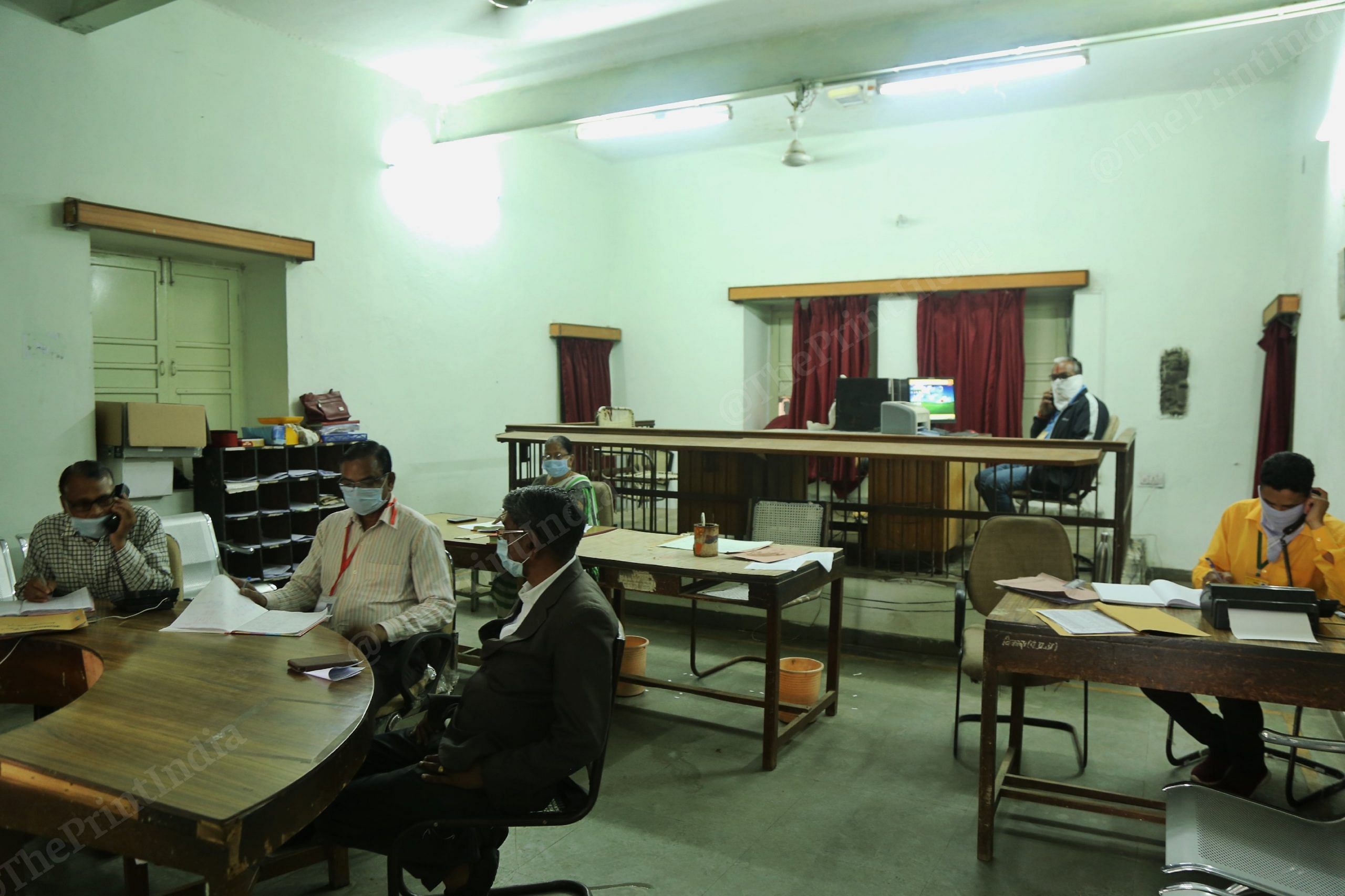
The hospital where it all began
The Brijesh Banger Memorial Hospital is situated in a locality that houses 20 other hospitals. It has a reputation of being one of the better healthcare institutions in the town.
There is still no clarity on how it has emerged as epicentre of the outbreak in Bhilwara. There have been rumours that one of the doctors had a visitor from Saudi Arabia while another popular theory is that the hospital failed to test a patient in Intensive Care Unit (ICU) who may have been positive for Covid-19. Neither theory has, however, been substantiated.
What is true, though, is that most of the positive cases in Bhilwara can be traced back to the hospital.
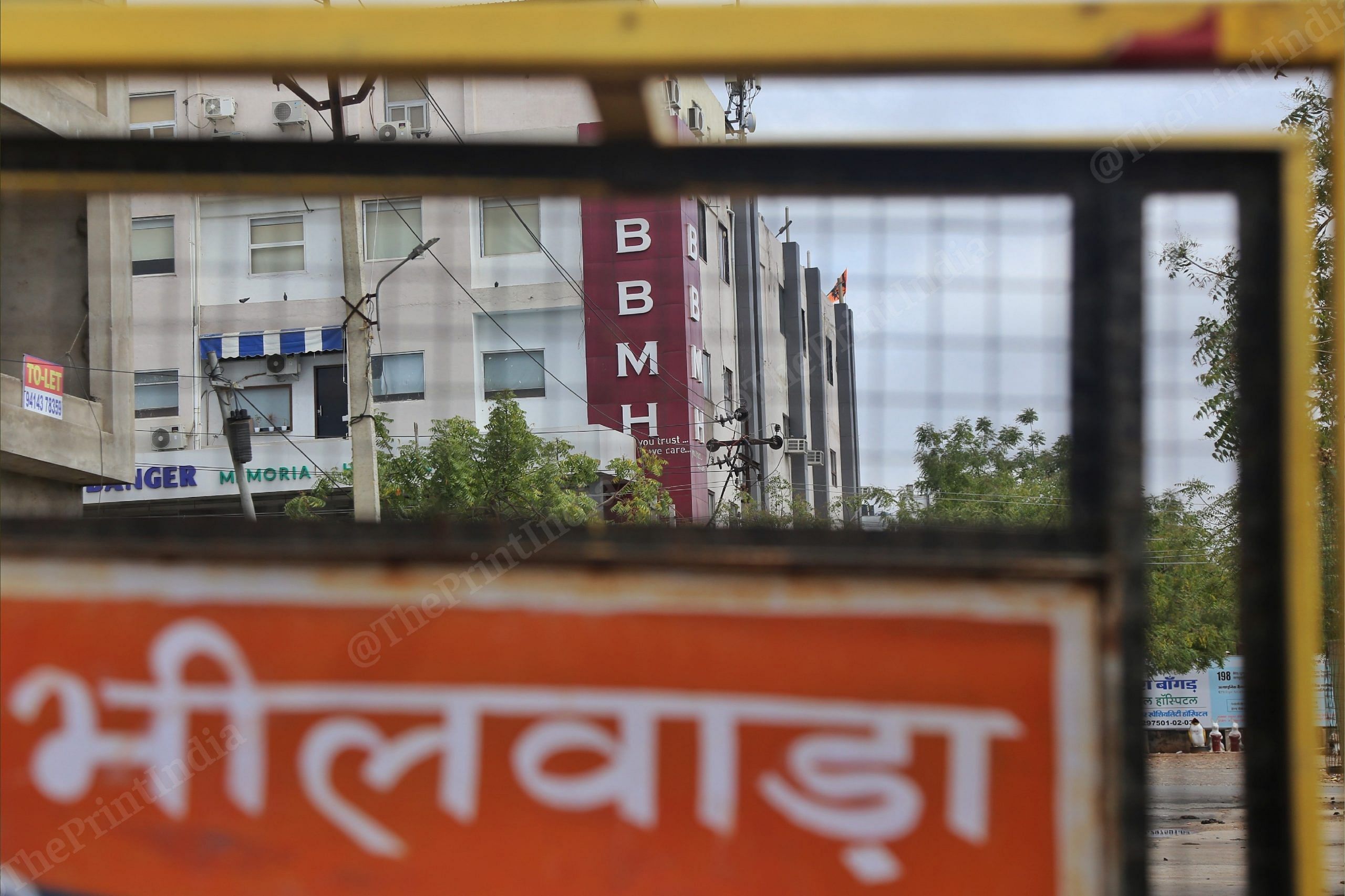
It all began on 19 March when Dr Niyaz Khan, an anaesthetist at the Brijesh Banger Memorial Hospital, tested positive for Covid-19. He had been referred to the Sawai Man Singh Hospital in Jaipur from the Mahatma Gandhi (MG) Hospital and Medical College in Bhilwara. The 433-bedded government hospital houses the isolation facility in the district.
The following day, Dr Alok Mittal, a general physician at the private hospital and a popular doctor in the town, tested positive along with five other staff. He had himself checked into MG Hospital and had asked to be isolated. The doctor even put out a video addressing his patients.
22 cases in last 24 hours alone in bhilwara , dr alok mittal is found positive who attended lots of patients and now in isolation ward at M G hospital https://t.co/NDhrJos3TR pic.twitter.com/ZrayhVg5hA
— Manish Sharma (@Manish_Sharma_b) March 20, 2020
The district administration swung into action on that very day, 20 March, announcing a curfew and sealing off the borders.
It then sealed Banger hospital and moved its patients to MG Hospital. Samples from the staff and their families’ samples were tested and they were moved to resorts that were converted into isolation centres. Around 250 of them still remain at these resorts.
“We thought we were prepared to deal with coronavirus but news of Banger hospital was like an explosion,” said a senior official from the district administration.
It later emerged that Dr Mittal had been suffering from cold-like symptoms from 12 March but continued treating patients until 20 March. Hospital records showed he had seen 5,580 patients in the Out-Patient Department (OPD) until the day he tested positive.
The sheer number, district officials say, is what prompted them to conduct a wider door-to-door survey.
Also read: Mumbai start-up builds AI-based X-ray technology to help detect Covid-19
The door-to-door survey
Dressed in a white sari, with her hair and face covered in a red scarf, hands covered in a long white jacket, Himat Kanwar, in her 30s, is on the search for a virus that has disrupted the whole world, including her town, one house at a time.
Careful not to touch anything at the homes she surveys, Kanwar uses the stick that she carries along with her handbag to ring the doorbells and speaks from a distance of six feet from a home.
She has a detailed checklist. “Does anyone in your family have fever? Did someone from abroad visit you? Has someone from your family visited Banger (pronounced as Bagad locally) hospital since 22 February?” are some questions Kanwar asks at each of the 80 houses she and her colleague have been assigned in this shift.
Kanwar is part of the 3,135 teams of health workers that the district administration has formed to screen for the virus. Of these, 1,135 teams have already screened almost all of the 4 lakh urban residents in the districts, while 2,000 teams have done the same for the nearly 24 lakh rural residents.
Their efforts over the past two weeks has helped put 6,445 people in home isolation and has found 2,900 people in urban areas and 11,000 people in urban Bhilwara with possible flu or influenza-like symptoms.
“We are now in the second cycle of screening, in that those who were found with influenza-like symptoms will be checked again. If they haven’t recovered, they will be tested and quarantined,” Bhilwara district magistrate Bhat said.
The administration believes it will take two more cycles of door-to-door screenings to detect all the cases of coronavirus before the curfew began. “It would take us 28 days to find if there has been community spread,” Bhat said.
Doctors are hopeful that the swift action may have contained the spread.
Since the administration has been testing asymptomatic patients who had been in Banger hospital and home quarantining those with flu-like symptoms, and quarantining other high-risk patients, they have been able to control the spread of the disease, said A.N. Mathur, additional director, MG hospital.
Mushtaq Ahmed, chief health and medical officer, MG Hospital, also said the deaths of the two Covid-19 positive cases — a 73-year-old and a 60-year-old — were not linked to the coronavirus.
“While one was already in a coma when he was admitted in Banger hospital, the 60-year-old had kidney issues and died due to kidney failure,” Ahmed said.
The worry, however, is that if there is a spike in cases, Bhilwara’s health infrastructure may not be able to handle it.
The town already has 25 positive cases of the coronavirus but has only about nine ventilators in its government hospitals and about 60 in the private sector.
“All the 19 patients (admitted as of 29 March) who were positive are doing well. They may not need ventilator support,” said Rommel Singh, Project Director (Child Health), Rajasthan Health Service, who has been put incharge of the coronavirus response for the district.
Four of Bhilwara’s positives cases are hospitalised in Jaipur while two have died.
But knowing that there are additions of 2-3 cases of coronavirus everyday and global evidence showing that 5 per cent of the patients require ventilators, the number of ventilators seems inadequate in the district.
Also read: Soldiers failing to disclose Covid-19 information will invite action under Army Act
Home delivery of rations, residents taking it easy
In the ‘war room’, Shyamlal Patel has been diligently taking notes in the register about complaints of irregular supply of fruits and vegetables in a locality in Bhilwara. While he is a government school principal, he is now busy answering calls in the control room at the district collectorate. In another telephone line, another officer from the health department listens to a man complaining of fever and explains to him the symptoms of coronavirus. He lists his contact details and follows up with the field staff.
Unlike other cities in India, even grocery stories in Bhilwara have been shut.
Designated booths deliver groceries while trucks with fruits and vegetables visit localities. There are also government authorised grocery vans that go around the city, said Pawnesh Sharma, public relations officer, Bhilwara. “We are also sending 15,000 free rations packets with essential groceries like rice, dal and oil to those who cannot afford it,” he said.
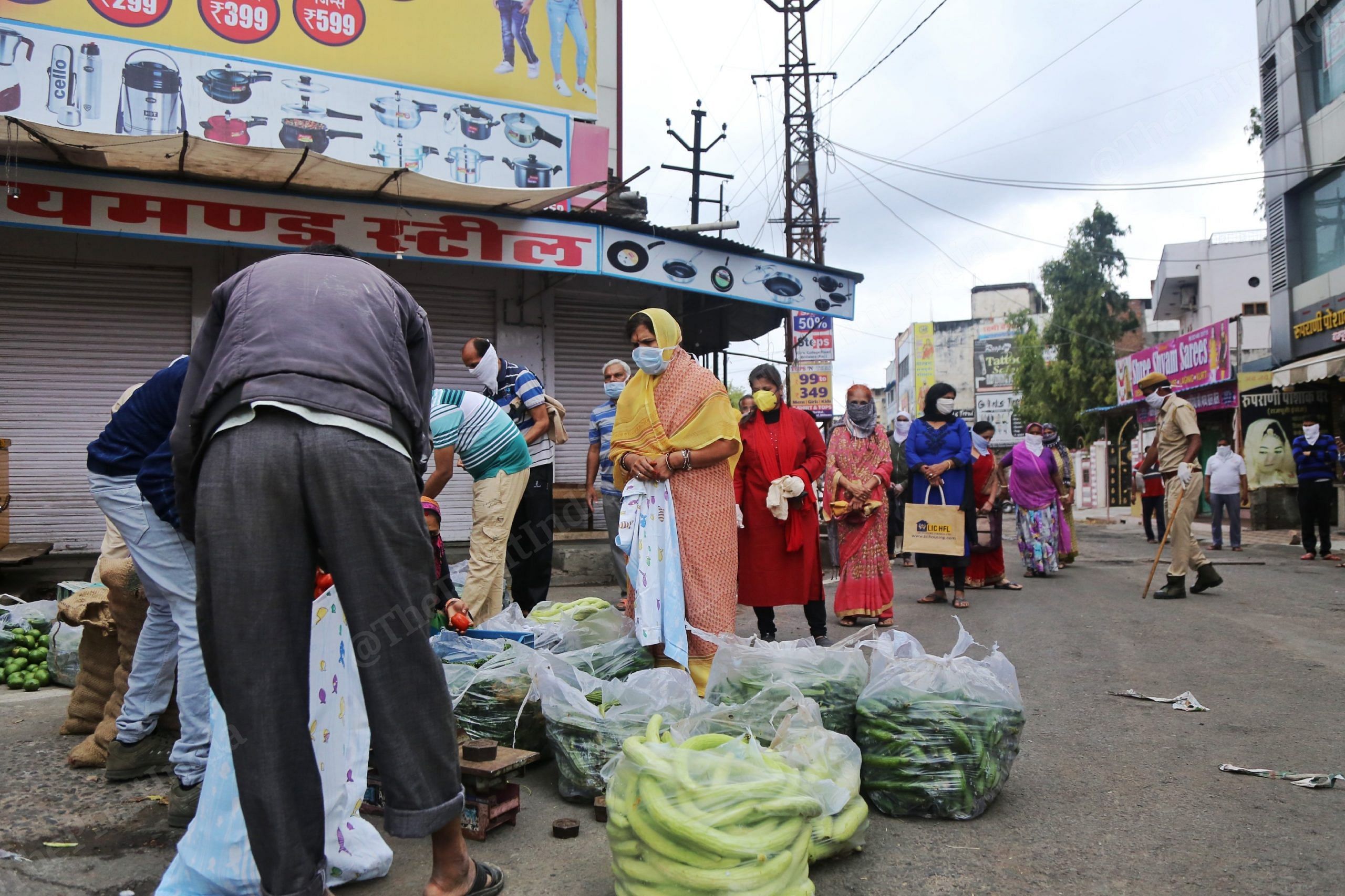
That, however, doesn’t mean that the lockdown is being followed in letter and spirit.
While the main streets are deserted, save the police personnel patrolling them, the bylanes had residents on two-wheelers and neighbours chatting and visiting each other.
“This is home, we cannot go anywhere,” said Madhu Kabra in the locality outside the now-sealed Banger hospital. “The hospital was very popular and people visited it because of Dr Mittal,” she said.
Kabra said their lane has been sanitised twice already and that they are not afraid.
In the lane opposite, women wearing traditional clothes gather outside the veranda and perform the Gangaur Puja — a spring festival celebrating Shiva and Parvati’s wedding in Rajasthan and Madhya Pradesh, despite the curfew orders and without masks. “We know each other, we are not afraid of coronavirus,” said the lady who hosted them.
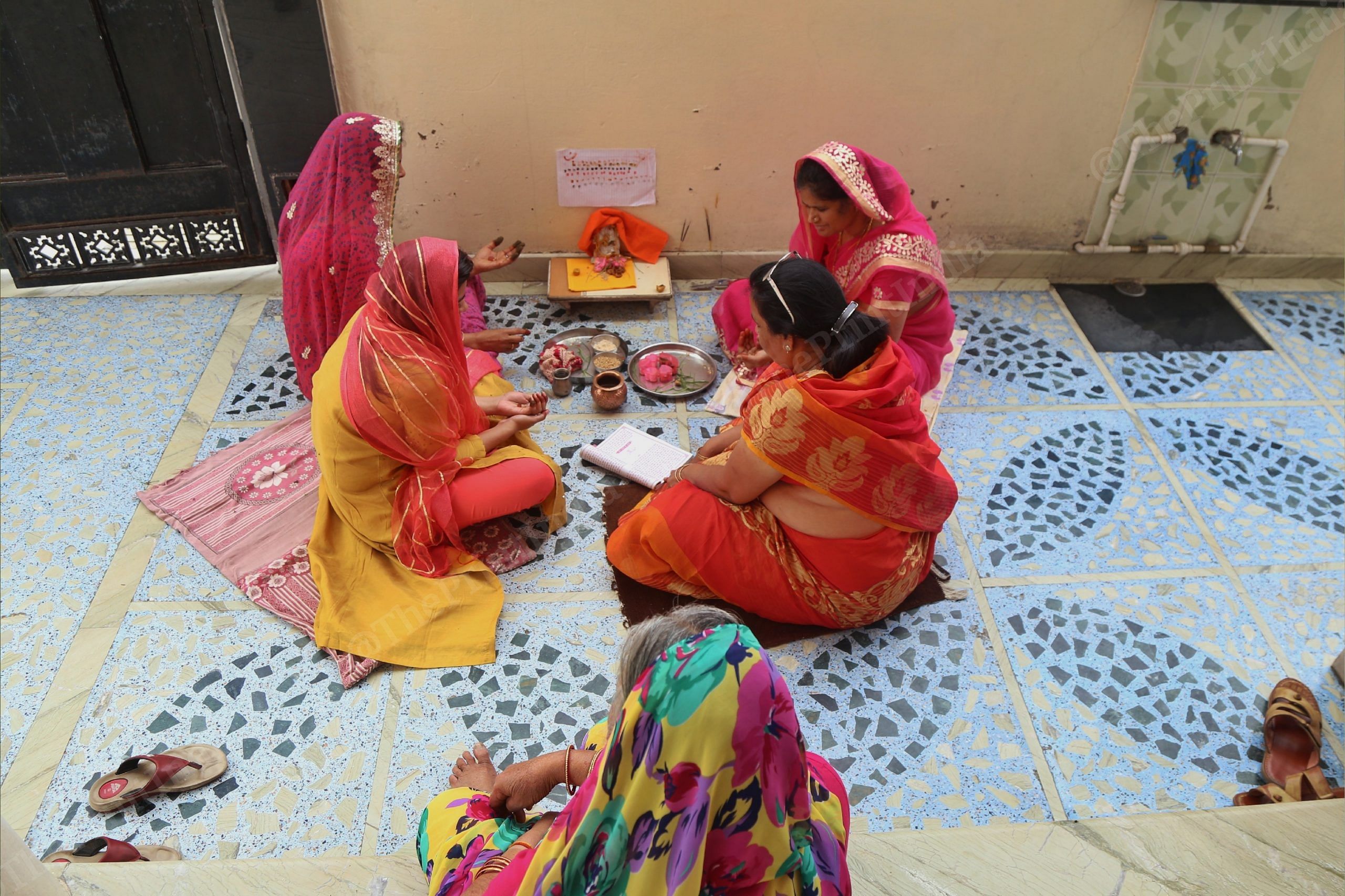
But staff at the MG hospital, where patients are isolated, are afraid.
“As you know, hospitals are at high risk. How do we know which patient is Covid-positive?” asked a nurse.
She alleged that there aren’t enough masks and sanitisers in all the wards and that samples are not collected systematically, which may lead to further exposure.
“It is sad that the negligence of one hospital has caused the whole city to live in fear,” she said.
Also read: How Covid-19 is changing Indian politics


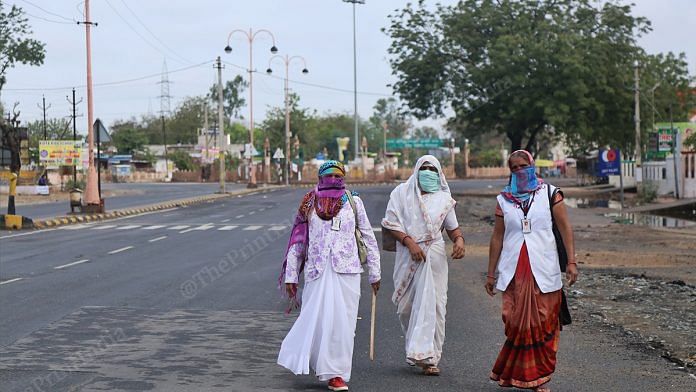

The district administration’s swiftness in handling the situation must be appropriated.
This is a great example of good governance.
28 lakh people checked — inside Bhilwara, this needs to be fact checked. Including the surrounding district population I don’t think it will add up to 28 lack.